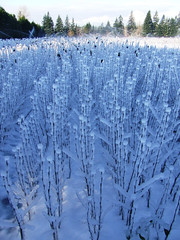The lead instructor of WSU's forest stewardship extension courses in Everett WA invited me to speak, as a two-course alumnus, to his current class.
 |
Slash pile, one of many we've created from thinning and
pruning our stands to make them healthier, safer in case
of forest fire, more attractive to wildlife, and
more aesthetically pleasing. |
I put together a slide show that serves as a virtual tour of our property, starting with pictures of the thick woods when we bought it, through today's thinned and pruned stands.
I told 20 minutes' worth of stories about our experiences, lessons learned, and advice for those starting out with private timber land.
It was genuinely fun to go back through photos to build the deck of 65 slides (they go fast), and even more fun to present it to the adult students and take their many, interesting questions.
Feedback from the audience was positive, which is always a nice ecouragement for me to speak again if the opportunity arises. The instructor, Kevin Zobrist, has asked me to record the presentation so other instructors can use it. Of course I will, but that does take the fun out of it for me.
The courses are Coached Planning for people writing their forest management plans, and Advanced Planning for people implementing their plans on their own. The first course is rich in information and well taught. I highly recommend it. The advanced course is unfortunately no longer offered. Both are the product of Washington State University Extension Forestry.




